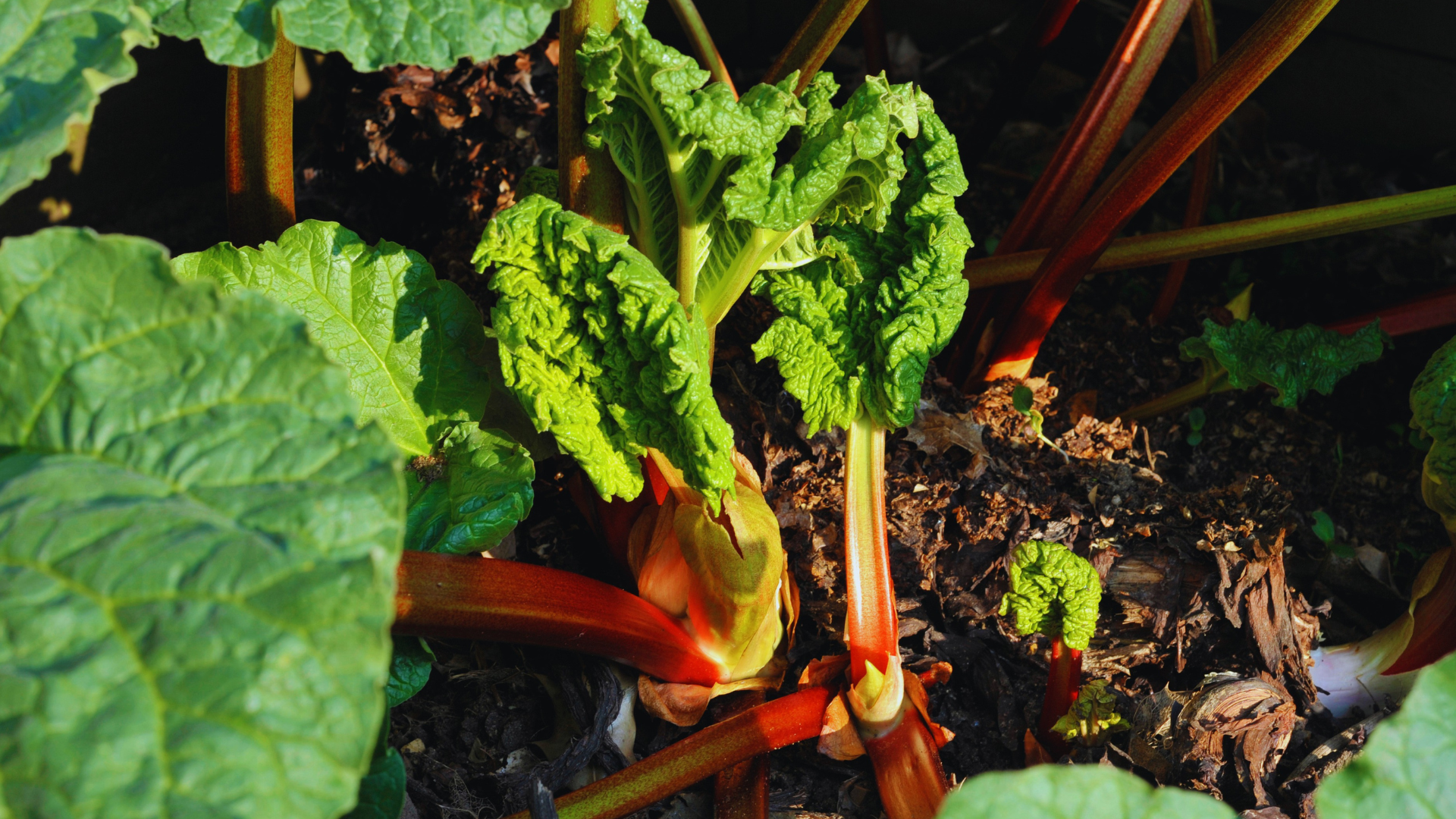Rhubarb is a popular perennial vegetable grown for its tart, red stalks that are commonly used in pies, jams, and other desserts. As the rhubarb plant grows, it produces large, green, toxic leaves that contain high levels of oxalic acid. This leads many gardeners to ask – can I compost rhubarb leaves safely or should they be avoided in compost piles? Let’s take a look at the risks, benefits, and best practices for composting rhubarb leaves.
Are Rhubarb Leaves Toxic?
The leaves of rhubarb contain soluble oxalic acid crystals which are toxic to humans and animals when ingested. Oxalic acid is an organic compound that binds calcium and other minerals, preventing the body from absorbing them properly.
In high enough concentrations, oxalic acid is corrosive and can cause throat irritation, difficulty breathing, kidney damage, convulsions, coma and even death in humans. Livestock have also been poisoned after eating large amounts of rhubarb leaves.
For this reason rhubarb leaves should never be eaten. Only the stalks of rhubarb are edible. The leaves are best removed and discarded as the plant grows to prevent accidental poisonings.
Benefits of Composting Rhubarb Leaves
While rhubarb leaves are toxic when fresh, composting them is safe for a few key reasons:
-
Breakdown of toxins – As organic matter decomposes, the oxalic acid in rhubarb leaves breaks down into carbon dioxide and water. This removes the toxicity.
-
Dilution – The small amount of rhubarb leaves added to compost is greatly diluted by all the other plant materials, manure, and soil in the pile.
-
Acid absorption – Some of the oxalic acid binds to minerals and metals in the compost, making it unavailable for plant uptake.
-
Organic matter – Rhubarb leaves provide a good source of green, nitrogen-rich organic matter to feed composting microbes.
-
Reduced waste – Composting the leaves keeps them out of landfills and puts the nutrients back into the soil.
Best Practices for Composting Rhubarb Leaves
Composting rhubarb leaves is safe when some basic guidelines are followed
-
Chop leaves – Cut or shred leaves into smaller pieces to allow for faster decomposition of the oxalic acid.
-
Mix and bury – Mix shredded leaves with carbon-rich materials like leaves or straw. Bury leaves under 10-12 inches of compost.
-
Maintain heat – Turn compost pile regularly to distribute moisture and airflow. Use a compost thermometer to maintain 130-150°F, which will speed decomposition.
-
Limit quantity – Rhubarb leaves should make up no more than 10-15% of the total compost volume at a time.
-
Allow curing – Let finished compost cure or age for 4-6 weeks before using to allow final breakdown of any remaining oxalic acid.
-
No edible crops – Avoid using compost with rhubarb leaves in vegetable garden beds where leafy greens, root crops or other edible plants will grow. Or wait at least 2 years between applications.
Although rhubarb leaves contain toxic oxalic acid when fresh, composting them is a safe and eco-friendly option. The acid breaks down quickly into harmless compounds as the leaves decompose. Following a few best practices, like maintaining heat and mixing with carbon materials, will speed up decomposition. While compost with rhubarb leaves should not be used on edibles right away, the benefits of recycling nutrients back to your soil outweigh the small risks.
Is it safe to compost rhubarb leaves? | www.garden.help
FAQ
What leaves should not be composted?
Can I use rhubarb leaves as mulch?
What to do with dead rhubarb leaves?
Is rhubarb compost safe?
Before starting, there are a few basics you will need to know. Even though handling compost from rhubarb leaves is safe, make sure to handle the fresh leaves with care. Put on all the necessary safety equipment, like protective gloves, and keep the leaves away from children and pets.
Can one use green rhubarb?
Green rhubarb is a vegetable similar to celery. You can eat its stems. Its leaves are toxic, so you should not eat them.
How long does it take to compost rhubarb leaves?
Composting rhubarb leaves can take anywhere from a few months to a year, depending on the conditions of your compost pile. Once the leaves have decomposed, you can use the compost on your garden or lawn. There are many benefits to composting rhubarb leaves. Here are a few of the most notable: Composting rhubarb leaves helps to reduce waste.
What are the benefits of composting with rhubarb leaves?
Here are some of the environmental benefits of composting with rhubarb leaves: Reducing waste: Composting with rhubarb leaves helps to reduce the amount of organic waste that goes into landfills, which in turn reduces greenhouse gas emissions.
- A Complete Guide to Caring for Yuki Cherry Blossom Shrub - January 23, 2025
- Identifying Red Hot Poker Seeds: What to Look For When Harvesting Torch Lily Pods - January 23, 2025
- A Complete Guide to Harvesting Evening Primrose Seeds - January 23, 2025

